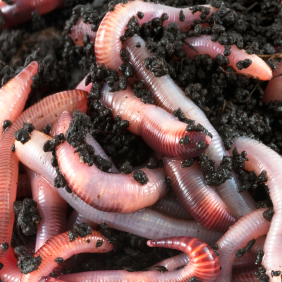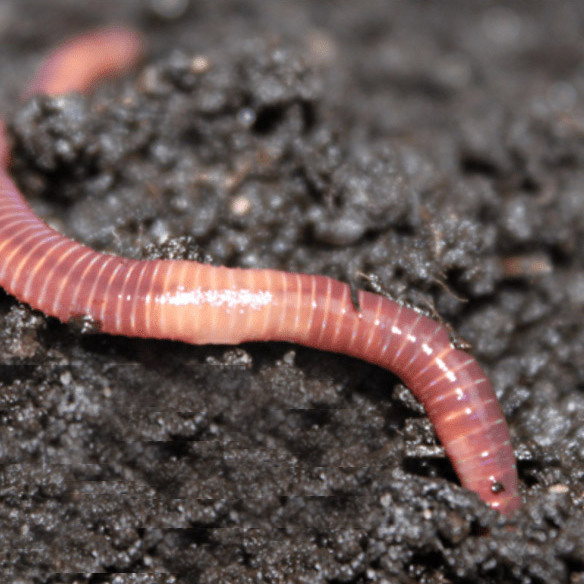Red worms: The best choice for composting
Obtain one of the most Out of Your Compost With Red Wigglers
The assimilation of red wigglers into your composting system can substantially improve the efficiency and effectiveness of waste monitoring methods. These worms are not only experienced at damaging down organic materials however additionally add to the development of top notch garden compost that improves soil wellness. Comprehending their optimum treatment demands and the benefits of vermicomposting is important for optimizing results (red wigglers). Nonetheless, the procedure of setting up and preserving a worm bin may provide challenges that warrant careful factor to consider. Discovering the complexities of this approach could expose services to typical composting concerns faced by lots of gardeners.
Comprehending Red Wigglers
Recognizing red wigglers is crucial for any individual interested in vermicomposting, as these worms play a pivotal function in breaking down raw material. Clinically called Eisenia fetida, red wigglers are identified by their reddish-brown shade and slender bodies, typically determining between 3 to 4 inches in length. Unlike earthworms, which thrive in dirt, red wigglers choose a moist, organic-rich environment, making them excellent for composting systems.
These worms are renowned for their starved hunger, eating half their body weight in organic product daily. This capacity allows them to quickly break down kitchen scraps, yard waste, and various other naturally degradable products, transforming them right into nutrient-rich garden compost. Red wigglers thrive in temperatures ranging from 55 ° F to 77 ° F, necessitating careful monitoring of their setting to guarantee optimal task.
In addition, red wigglers replicate quickly, doubling their populace about every 3 to 4 weeks under optimal problems. This quick recreation is vital for preserving a reliable composting operation. red wigglers. Understanding their biology and behavior is vital for anybody seeking to harness their possibility in lasting waste monitoring methods
Advantages of Vermicomposting
Vermicomposting deals numerous advantages that expand beyond basic waste decrease. This innovative method leverages the all-natural decomposition capacities of red wigglers to transform natural waste into nutrient-rich garden compost, boosting soil health and fertility. The resulting vermicompost is teeming with beneficial microorganisms, which can enhance dirt framework and rise nutrient accessibility for plants.

In addition, vermicomposting can be exercised in different setups, making it accessible for metropolitan dwellers and those with limited outside room. It requires very little financial investment and can be conveniently managed inside your home or outdoors, making it suitable for various lifestyles.
The usage of vermicompost additionally promotes much healthier plant growth by improving microbial activity, improving water retention, and giving necessary nutrients. Subsequently, garden enthusiasts and farmers that incorporate vermicompost into their practices often observe increased plant yields, making vermicomposting a lasting choice for both waste administration and farming efficiency.
Setting Up Your Worm Bin
Developing an efficient worm bin is necessary for successful vermicomposting, and with just a few vital components, any person can establish a reliable system. Start with an appropriate container; a plastic or wood bin with a cover functions well. Preferably, the container should be in between 10 to 18 inches deep to give enough room for the worms to grow.
Guarantee proper ventilation by piercing little openings in the sides and lid, permitting for air movement while keeping wetness. Maintain a balance in between dampness and water drainage; the container must perspire yet not saturated. A layer of go to website bed linen, such as shredded newspaper or cardboard, offers an environment for the worms and aids in moisture retention.
Take into consideration the area of your worm container (red wigglers). By complying with these standards, you will produce a conducive environment for red wigglers, laying the foundation for a successful vermicomposting undertaking.
Feeding Your Red Wigglers

Avoid feeding them meat, dairy, and oily foods, as these can draw in pests and develop unpleasant odors. Furthermore, it is essential to chop or shred larger items to assist in quicker disintegration, guaranteeing your worms can access the nutrients a lot more successfully.
Small amounts is vital; overfeeding can cause anaerobic problems, hurting the worms and slowing down the composting procedure. Screen the container for leftover food and readjust your feeding regimen as necessary. A general policy is to give about half a pound of food per pound of worms weekly.
Lastly, preserving dampness is essential. Aim for a moist, but not soggy, environment, as wetness help in the failure of food and sustains worm activity. By carefully handling their diet plan, you can boost the effectiveness of your red wigglers in transforming organic waste right into rich compost.
(red wigglers near me)
Harvesting and Utilizing Compost
After several weeks of persistent composting, you will certainly notice that the abundant, dark compound generated by your red wigglers is all set for harvest. One efficient approach is to utilize a light resource; red wigglers are delicate to light and will certainly tunnel much deeper right into the material, enabling you to scoop out the top layer of garden compost.
As soon as gathered, the compost can be made use of in different applications. Mix it into yard soil to improve structure and fertility, or utilize it as a top dressing for potted plants.
Bear in mind to store any kind of unused compost in an amazing, completely dry area to preserve its top quality. By effectively harvesting and making use of the compost generated by red wigglers, you not only improve your yard but likewise promote lasting gardening techniques.
Final Thought
Incorporating red wigglers right into composting methods considerably enhances the performance of organic waste change. Ultimately, the assimilation of red wigglers in composting contributes to lasting horticulture, reduces land fill waste, and advertises environmental stewardship through effective source recycling.